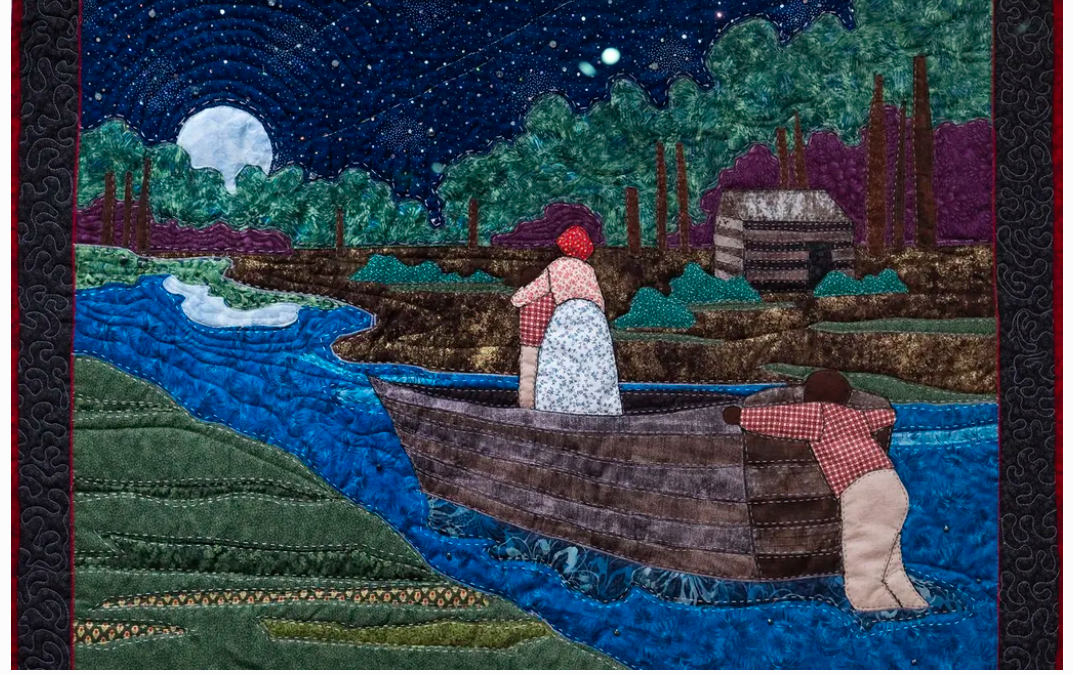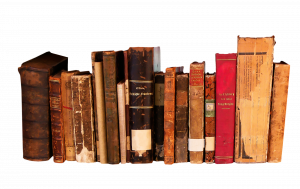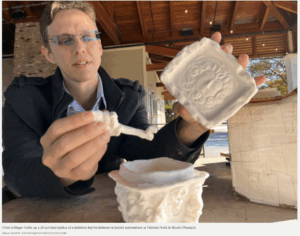Tubman’s 1863 raid, which destroyed seven plantations along the Combahee River in South Carolina and freed 756 enslaved laborers, is now the subject of an exhibition in Charleston
On the moonlit night of June 2, 1863, Harriet Tubman and 300 Union soldiers, many of them Black, departed Beaufort, South Carolina, on three gunboats. They sailed in stealth up the Coosaw River until one ship ran aground. The soldiers piled into the other two ships and continued.
At the entrance to the Combahee River, a group of Confederate soldiers scattered at the sight of the Union ships. As they continued upriver, the soldiers from the Second South Carolina Volunteers—an African-American infantry regiment—and the Third Rhode Island Heavy Artillery torched the rice fields, mills and houses they passed. In total, they destroyed seven plantations that night, dealing a fiery strike to the Confederates of the Lowcountry.
The Combahee River Raid lasted just six hours. The attack liberated some 756 enslaved laborers, who abandoned the burning plantations and ran to salvation aboard the Union boats.
“I never saw such a sight,” Tubman, who planned and executed the raid alongside Colonel James Montgomery, once recalled. “Sometimes the women would come with twins hanging around their necks; it appears I never saw so many twins in my life; bags on their shoulders, baskets on their heads, and young ones tagging along behind, all loaded; pigs squealing, chickens screaming, young ones squealing.”
That massive liberation—which freed ten times more enslaved people in one night than in Tubman’s roughly 13 trips on the Underground Railroad—was the subject of historian Edda Fields-Black’s 2025 Pulitzer Prize-winning account, Combee.
It is also the focus of “Picturing Freedom,” a multimedia exhibition at the Gibbes Museum of Art in Charleston, South Carolina, which draws on Fields-Black’s research to present the story of the Combahee Raid and its legacies through visual art. Featuring 45 works by artists like Faith Ringgold and Stephen Towns, the show is on view until October 5, 2025.
For years, the story of the Combahee River Raid was left untold or “suppressed, simply because it led to the freedom of so many enslaved people,” Angela Mack, the president and CEO of the Gibbes Museum, tells the TV station WCBD.
Fields-Black’s book gave the remarkable story the complex treatment it deserved, and from early on in the writing process, she envisioned a museum exhibition to accompany her prose.
The challenge for both author and museum was telling a rich wartime story without reducing it to the dispassionate details of a military reenactment.
For Fields-Black, that meant turning to voices usually left out of the historical record. “I found sources where the people liberated in the raid told their own stories,” she tells Pittsburgh City Paper’s Aakanksha Agarwal. “That’s almost non-existent in the history of slavery.”
One person whose voice stuck out for Fields-Black was Minus Hamilton, an 88-year-old who was hoeing the rice fields at the time of the raid. “He was in awe,” Fields-Black tells Pittsburgh City Paper of Hamilton’s reaction to seeing the soldiers. “They came in, heads up, backs straight, and burned everything the man who had enslaved him owned.”
/https://tf-cmsv2-smithsonianmag-media.s3.amazonaws.com/filer_public/b8/1b/b81bc921-0dcb-479b-b082-5633b3cb589c/4578-336.jpg) The exhibition also features landscape photography by J. Henry Fair, which bears witness to flat, expansive wetlands of coastal South Carolina and sets the scene of the raid. In one photo, Fair captures the moon rising in the dark blue night sky. It casts its glow over the bends in the Combahee, much like it did on that fateful June night 162 years ago.
The exhibition also features landscape photography by J. Henry Fair, which bears witness to flat, expansive wetlands of coastal South Carolina and sets the scene of the raid. In one photo, Fair captures the moon rising in the dark blue night sky. It casts its glow over the bends in the Combahee, much like it did on that fateful June night 162 years ago.
“You almost feel immersed in the Combahee River as you’re walking through the gallery spaces … and you’re understanding Harriet’s presence there,” Mack tells Artnet’s Sarah Cascone.
Other images show the flaming sun over the same landscape and alligators wading in the water. Close-ups of rice plants offer another perspective on the environment, showing the husks that would have been harvested by the labor of enslaved hands.
/https://tf-cmsv2-smithsonianmag-media.s3.amazonaws.com/filer_public/5b/26/5b26ce36-75a1-4b01-9a78-fe933dae9abb/4602-236.jpg)
Hamilton’s first-person testimony of the night of his liberation was recreated by actor Ron Daise in a video for the exhibition. Like Fields-Black, Daise is part of the Gullah Geechee people, descendants of enslaved West Africans forcibly brought to the rice, indigo and cotton plantations of the Lowcountry.
Three Freedom Fighters (circa 1954), a painting by William H. Johnson, a South Carolina-born artist, depicts Tubman hand-in-hand with Frederick Douglass and John Brown, who prophetically called Tubman “general” when they met in 1858 and referred to her as “one of the best and bravest persons on the continent.”
Recognizing her role as the first American woman to oversee military action during wartime, Maryland’s National Guard posthumously awarded Tubman the rank of one-star brigadier general on Veterans Day last year.
Her actions and leadership inspired even in the immediate aftermath of the raid, when 150 of the liberated men enlisted in the Second South Carolina Volunteers, committing to continuing the fight against slavery and the Confederacy.
“[That] these individuals achieved their freedom and then turned right around and joined the Union Army to come back and fight for others to be freed is pretty remarkable,” Mack tells Artnet. “It’s extremely important for institutions across the country—whether they are art museums, historical societies or libraries—to tell these important stories about our history.”
“Picturing Freedom” is on view at the Gibbes Museum of Art in Charleston, South Carolina, through October 5, 2025.
–smithsonianmag.com



